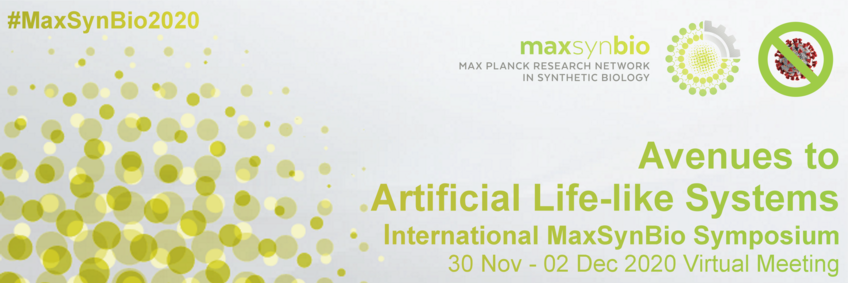
#45 Reconstitution of contractile actomyosin rings in vesicles
Thomas Litschel (Max Planck Institute of Biochemistry, Martinsried, Germany)
Tuesday, 01 Dec 21:15 - 22:00 CET
Access to the BigBlueButton rooom for this Mini Talk via the lists for Monday and Tuesday.
Please make yourself familiar with BigBlueButton before you join the Mini Talk - read the instructions.
Abstract
Title: Reconstitution of contractile actomyosin rings in vesicles
Author(s): Thomas Litschela, Charlotte F Kelleya, Danielle Holzb, Maral Adeli Koudehib, Sven K Vogela, Laura Burbauma, Naoko Mizunoa, Dimitrios Vavylonisb, Petra Schwillea
Affiliation(s): aMax Planck Institute of Biochemistry, Martinsried, Germany; bLehigh University, Bethlehem, USA
Abstract: One of the grand challenges of bottom-up synthetic biology is the development of minimal machineries for cell division. The mechanical transformation of large-scale compartments, such as Giant Unilamellar Vesicles (GUVs), requires the geometry-specific coordination of active elements, several orders of magnitude larger than the molecular scale. Of all cytoskeletal structures, large-scale actomyosin rings appear to be the most promising cellular elements to accomplish this task. We have adopted advanced encapsulation methods to study bundled actin filaments in GUVs and compare our results with theoretical modeling. By changing few key parameters, actin polymerization can be differentiated to resemble various types of networks in living cells. Importantly, we find membrane binding to be crucial for the robust condensation into a single actin ring in spherical vesicles, as predicted by theoretical considerations. Upon force generation by ATP-driven myosin motors, these ring-like actin structures contract and locally constrict the vesicle, forming furrow-like deformations. On the other hand, cortex-like actin networks are shown to induce and stabilize deformations from spherical shapes.